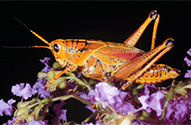



Chinch Bugs: The southern chinch bug, Blissus insularis Barber, is an insect pest of St. Augustine grass, a turf and pasture grass grown throughout the southern United States. This tiny pest, rarely measuring over 6 mm in length, causes millions of dollars in damage per year. For this reason, much research has focused on the development of a more economic and effective mode of control, although pesticide application remains the most popular method today.
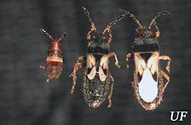
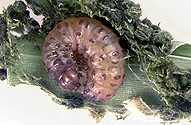
Tropical Sod Webworms: Tropical sod webworm larvae are gray-green and have brown spots on each segment. Mature larvae can be 3/4 to 1 inch in length, and they pupate in the thatch or on the soil surface. Mature caterpillars eat a lot before they pupate and consume patches of turfgrass down to the crown. Because the turf looks scalped so quickly, people think that the damage occurs "overnight."
Fall Armyworms: The fall armyworm is native to the tropical regions of the western hemisphere from the United States to Argentina. It normally overwinters successfully in the United States only in southern Florida and southern Texas. The fall armyworm is a strong flier, and disperses long distances annually during the summer months. It is recorded from virtually all states east of the Rocky Mountains. However, as a regular and serious pest, its range tends to be mostly the southeastern states.
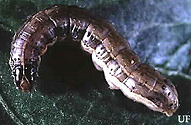
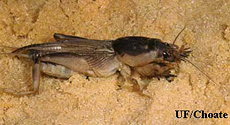
Mole Crickets: Three species of mole crickets were inadvertently introduced to the southeastern United States about 1900, and have caused serious plant damage. The introduced species are: the shortwinged mole cricket, Scapteriscus abbreviatus Scudder; the southern mole cricket, Scapteriscus borellii Giglio-Tos (known until recently as S. acletus Rehn and Hebard); and the tawny mole cricket, Scapteriscus vicinus Scudder.
Eastern Lubber Grasshopper: Eastern lubber grasshopper is surely the most distinctive grasshopper species found in the southeastern USA. Adults are colorful, but the color pattern varies. Often the adult eastern lubber is mostly yellow or tawny, with black on the distal portion of the antennae, on the pronotum, and on the abdominal segments. It is unable to fly, a poor leaper, and clumsy; but, it is a good climber. They damage a wide range of plants, crops, and fruit trees.
